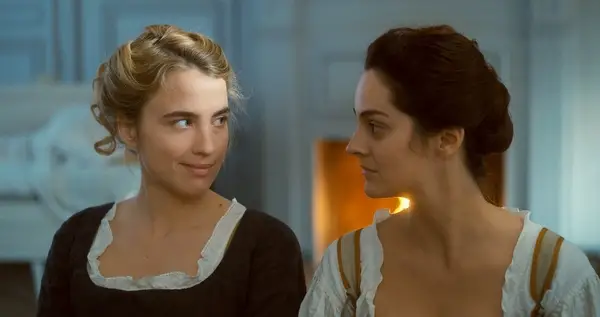The initial shot of Céline Sciamma‘s Portrait of a Lady on Fire pulls you into its dreamy vagueness almost instantly, as portrait painter Marianne (Noémie Merlant) bobs on the messy shores of Brittany. Commissioned to paint a portrait of reluctant bride, Héloïse, (Adèle Haenel), she must construct a marriage portrait of her out of only memory – since she’s infamously opposed to her oil immortalization. Her husband-to-be: an unknown wealthy Italian from Milan whom she’s never crossed. With a narrative dogged by the uneasy current of the tide, the backdrop of the dramatic cliffs of northwestern France set up the melancholic tale of female love that’s to follow.
Visually each frame in the film is closer to an oil painting than a movie still and is only further elevated by a subtextual, slow-burn, screenplay that proves that the French continue to uphold their spot in the world of cinema. Winning the Jury Prize for Best Screenplay, Portrait of a Lady on Fire swept audiences in Cannes Film Festival since its premiere and was lauded by North American audiences at TIFF last Thursday. And this film isn’t showing any signs of stopping.
A Melancholic Tale of Female Love
The film, much like the process of oil painting, works on layered levels, Sciamma builds up the tension and longing until it finally emerges clearly on the surface. She also employs the construct of ‘the muse’ in a way it’s never been done before – between women, with mutual adoration. Marianne, who is unconventionally set to inherit her father’s business, isn’t bound to any matrimonial constructs, she exists outside of the margins of most 18th century women. Héloïse on the other hand, exists on the other end of the vacuum, in high society nonetheless, but chained to patriarchal society despite her stubborn refusal to accept it.

Héloïse and Marianne’s romance unravels quietly, patiently, starting from the position of muse and artist and deepening through knowing glances, saying more than one means, metaphorical discussions on Greek literature and piano concertos. It’s safe to say it might be one of the most artful depictions of love in contemporary cinema.
The countess stipulates to Marianne upon her arrival to the island that the one, cemented condition is that Héloïse mustn’t know what she’s truly there for. Guarded and capricious, Héloïse, grieving from the fresh sting of her sister’s death, believes Marianne to be a companion for walks, a respite from the days’ mundanity. It’s there, alongside the cataclysmic nature of the shore that Marianne’s stoic and erudite nature slowly engulfs all of her thoughts.
“When do we know when it’s finished?” Héloïse asks at one point, staring at herself reflected in the fibres of the canvas. Yet in this double-entendre, it’s clear she’s asking so much more.
“We don’t. At some point we just stop,” Marianne replies, striking the last few, blunt brushstrokes on her work of art, cementing their fate in the process.
Conclusion: Portrait of a Lady on Fire
The miasma of melancholy in Portrait of a Lady on Fire is exacerbated only by the inevitability that their time together is fleeting, that, like the legend of Orpheus and Eurydice, they must eventually turn away, left only with the memory of each other in their wake.
Céline Sciamma‘s tender masterpiece paints a portrait of visual poetry, of what happens when art intersects with love for a fragment of time.
Are you looking forward to this critically acclaimed foreign drama? Let us know in the comments below.
Watch Portrait of a Lady on Fire
Does content like this matter to you?
Become a Member and support film journalism. Unlock access to all of Film Inquiry`s great articles. Join a community of like-minded readers who are passionate about cinema - get access to our private members Network, give back to independent filmmakers, and more.